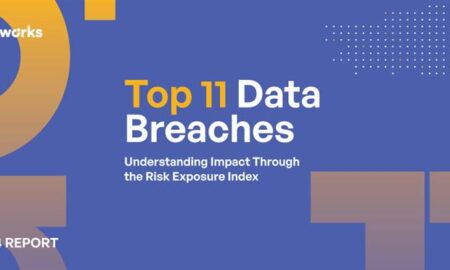The cryptocurrency market is constantly evolving and changing. The attractiveness and market value of different digital currencies frequently shift. New cryptocurrencies regularly surface, offering potential profits to certain investors. As 2024 approaches, many investors are wondering, “Which is the best crypto to invest in?” This article seeks to delve into and address this question.
Following a challenging 2022, the crypto market started to rebound in 2023. Predicting the future of the market is difficult, but several indicators suggest that 2024 could be a favorable year for cryptocurrencies. An increasing number of substantial investors are showing interest in the crypto sector. The underlying blockchain technology is improving, addressing issues related to speed, security, and functionality. Additionally, more people are starting to use cryptocurrencies in their daily lives, with many viewing them, particularly Bitcoin, as a hedge against inflation and financial instability.
Collectively, these factors suggest that cryptocurrencies might perform well in the coming year, potentially leading to market growth. However, potential challenges such as increased regulatory scrutiny by governments could impact the market’s trajectory.
Pandoshi (PAMBO)
Pandoshi, a recent entrant in the crypto sphere, is currently in the initial stages of its presale, offering tokens at $0.006 each. The project has already amassed over $700,000 and aims to hit $1,200,000 before transitioning to the next phase of the presale, where the token price is expected to rise.
The Pandoshi team is meticulously executing their strategy, earning accolades from cryptocurrency experts who believe Pandoshi has the potential to become widely popular soon.
The enthusiasm for Pandoshi stems from two main aspects: its focus on addressing real-world issues and its intelligent tokenomics.
The Pandoshi ecosystem consists of a Layer-2 Network employing Proof of Stake, a more eco-friendly approach than Proof of Work, as well as a decentralized exchange, a secure non-custodial wallet, metaverse gaming, educational programs, and cryptocurrency-compatible prepaid cards. All these elements operate using the native token PAMBO.
Pandoshi has announced it is ahead of schedule with the development of a critical ecosystem component, the non-custodial wallet. The beta version, supporting all EVM networks, is set for early release and will be accessible as both a browser extension and a mobile app for IOS and Android.
Pandoshi’s approach to addressing real-world challenges, particularly in decentralized finance and privacy, is noteworthy. Understanding the role of the PAMBO token is crucial to appreciate its value. PAMBO is a utility token at the core of Pandoshi’s ecosystem, facilitating transactions, services, NFTs, and other decentralized applications. As demand for Pandoshi’s services grows, so does the potential value of the PAMBO token.
The total supply of PAMBO is strictly capped at 2 billion, with half reserved for the presale phase. The allocation also includes 20% for decentralized exchange liquidity, 10% for centralized exchange liquidity, and 20% for marketing activities like airdrops and rewards.
PAMBO is crafted as a deflationary token through a buy-and-burn strategy, where tokens bought at market price are permanently removed from circulation, enhancing their scarcity. Each project component, such as the decentralized exchange’s transaction fees, contributes to PAMBO’s value by purchasing and retiring tokens from the market.
The Pandoshi presale is structured into five stages and is currently in the third stage at $0.006 per token. The price is set to rise to $0.008 in the fourth stage, with the final stage priced at $0.01 per token. The growing interest from the crypto community indicates a potentially successful initial public sale, which could drive PAMBO’s price higher post-sale.
Market analysts hold a positive outlook for PAMBO’s price in 2024, with strategic tokenomics suggesting a favorable price trend. Considering current market sentiment and development plans, experts believe PAMBO could see a value of $0.10 in its first year, marking a significant increase from its initial price.
Website: https://pandoshi.com/
Whitepaper: https://docs.pandoshi.com/
Shiba Inu (SHIB)
Next in line is the Shiba Inu Coin, which has been a part of the market for a few years now. As an asset with wide distribution, it tends to be less volatile and therefore might offer lower returns. Named after the Japanese dog breed, Shiba Inu has seen rapid growth since its entry into the crypto market, capturing the interest of many investors and enthusiasts. In late October 2021, the price of Shiba Inu experienced a dramatic surge of over 173% within a week, only to plummet nearly as swiftly afterward.
Shiba Inu is an alternative cryptocurrency established in August 2020 by an anonymous individual known as Ryoshi. The project’s “woof paper,” as the community calls it, states that Shiba Inu was launched on the Ethereum network due to its robustness and security.
The Shiba Inu ecosystem is currently developing a decentralized exchange and a Metaverse game, both of which are anticipated but have no confirmed release dates. Shiba Inu is available for purchase on various centralized and decentralized exchanges.
However, much of Shiba Inu’s fame stems from its viral nature. While there are stories of substantial profits from Shiba Inu, such investments can also lead to losses. While purchasing a few coins for entertainment might seem harmless, substantial investments in Shib are risky as its future value is uncertain.
It’s crucial to understand that Shiba Inu doesn’t possess inherent value. Despite its significant market capitalization, its worth is primarily based on its entertainment factor. Therefore, allocating a large portion of funds to Shib isn’t advisable. While Shiba Inu may offer opportunities for quick gains, it lacks the stability required for long-term investment.



































